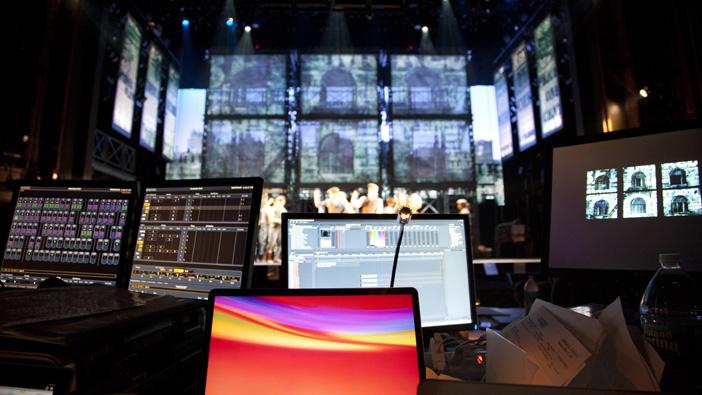I wrote this a while ago for my personal website. This is a much better place for it. It is now my second attempt to define what I do without excluding anyone who may work differently under the same job description.

Projection Design is concerned with the creation and integration of film, motion graphics and video technology utilizing cameras, projectors, LED walls or monitors into the fields of theatre, opera, dance, fashion shows, concerts and other live events.
The imagery production process usually includes the following activities: researching, story boarding, acquiring images or moving footage, editing, manipulating and compositing. The specifics of each activity are very diverse and differ from project to project. The same is true of the installation component of the design with the use of playback equipment, projectors, LED screens, monitors and cameras.
About the credit:
I got used to calling the work "video design" because that credit had already been in use when I started in 2000. Alternatives ranged from "animations" to "visuals" and even "VTR operator." Some of the credits are a symptom of a lack of understanding of what the job entails. Theatres in the UK eventually embraced the "video design" credit. In North-America, "projection design" is more common, but neither title fully describes what I really do.
Projection design is an older title which used to be applied to individuals or companies that realize or design different forms of slide projections. This commonly required the strategic placement of projectors and the skillful pre-distortion of the slides to compensate for unusual projection angles created by the architecture of the buildings housing the projections. With advancements in computer, projector and display technology, the term "projection designer" has lost some of it's descriptive power.
I approach a design as a combination of the creation of artwork and its delivery or display. Essential to the success of the design is to understand and specify the tools that will be used. A visible, bright, crisp image may necessitate a multitude of computers, projectors and control equipment. I like to be the person that chooses these components because they directly affect the resulting projections. As a projection designer, I need to know how to choose the tools that help me realize my and the creative team's vision. The process of designing the system that delivers the imagery with the use of modern display technologies is only a successor of the older slide projection process, which is one reason why I still call it "projection design."
Not all "video designers" necessarily have a theatre background, but often come from other fields such as film making, post production or graphic design. In those fields, only the content or the imagery is produced as part of the job. It is also a new field of work and standards are set only by the people who practice the profession. To highlight the fact that there is another important creative component necessary to the successful realization of a video design, I have in the past additionally used the credit "projection design." However, with the United Scenic Artist's Union Local 829's embrace of "projection design" as its youngest membership category in 2007, I have started to drop the video design credit again from the UK to the USA and nobody uses "video design" as credit here. I have also noticed since moving that as I have watched my profession mature, the one credit that has sustained time has been "projection designer."
A brief historical note:
I often read about how "video" or "digital projection" is the latest fad in contemporary theatre. The German Director Erwin Piscator from the 1920s frequently used movie projectors to enhance his productions. Josef Svoboda's applications from the 1950s are also astounding. Have a look at the timeline section on this site for more relevant history and data on projections design.

